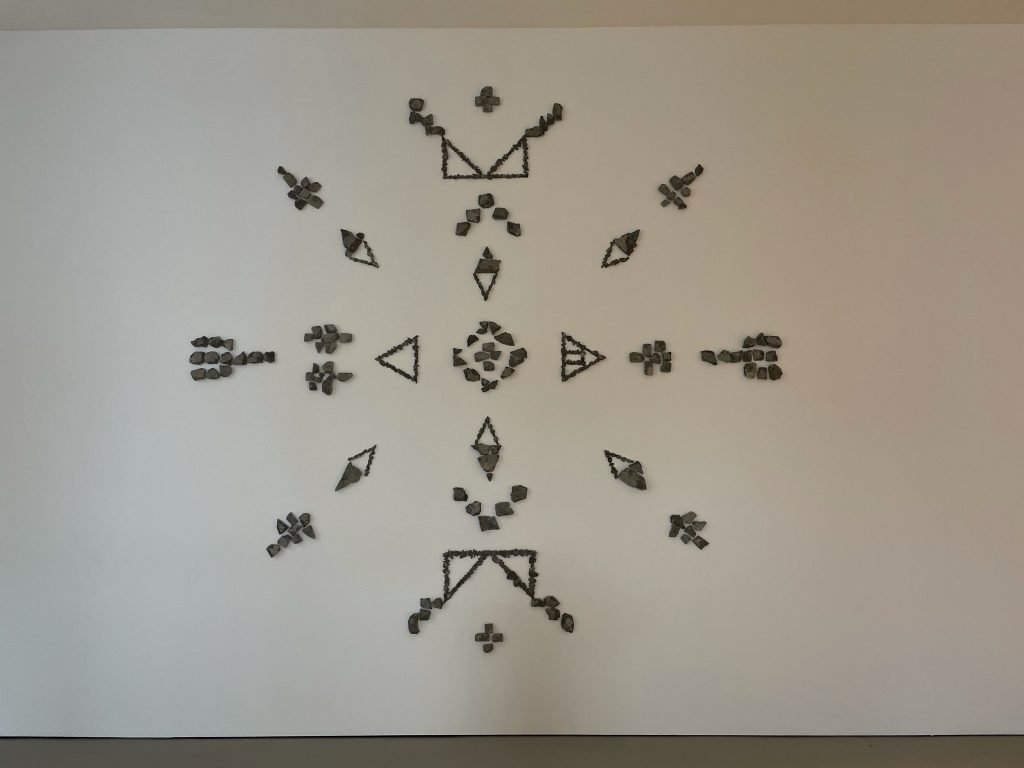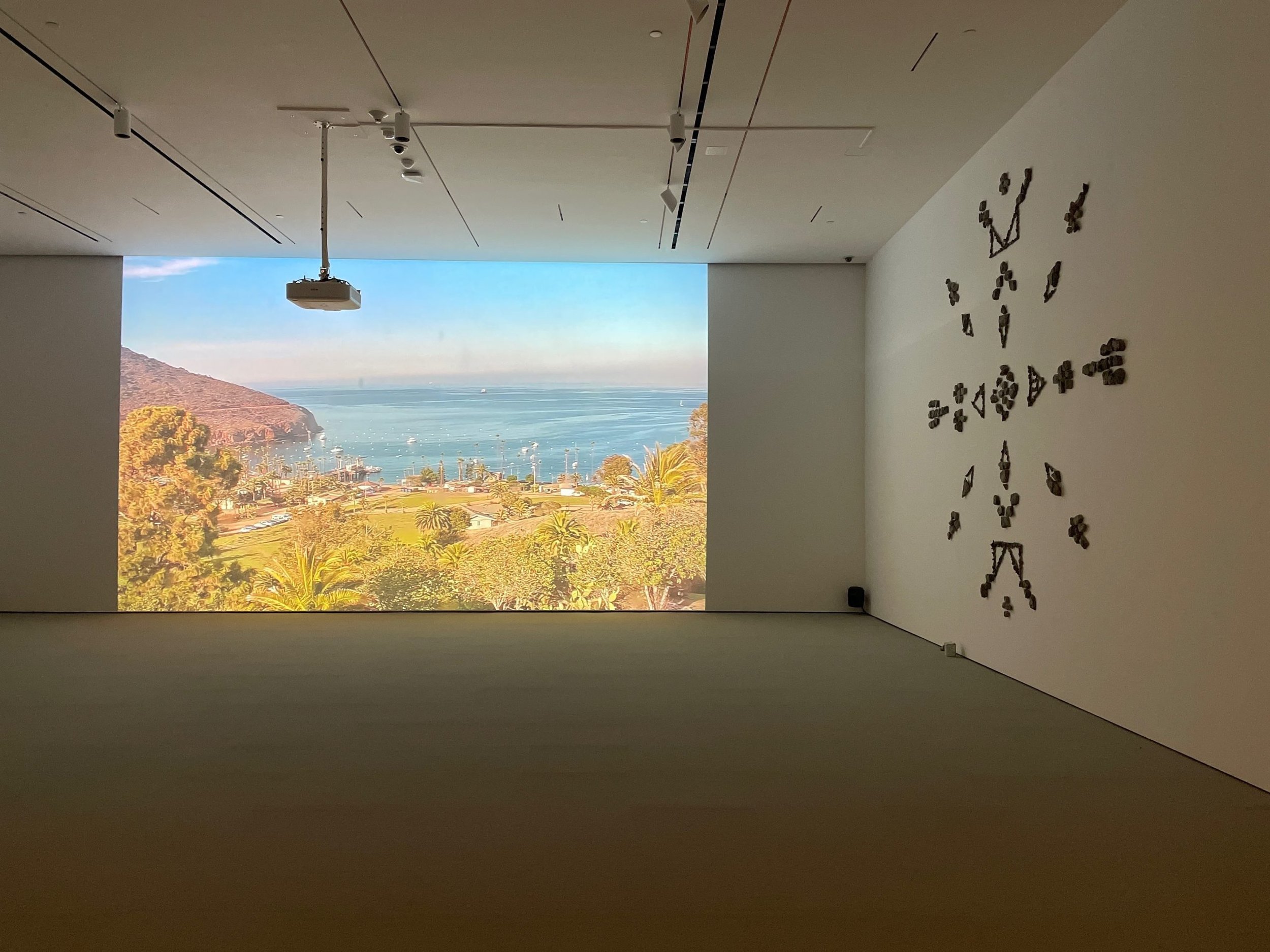Mázaȟlaȟla uŋ lowáŋpi wayáka wakȟáŋheža. (Enslaved children now sing through the bells.)
Description
Kite, in collaboration with Tongva/Ajachmem artist, writer and tribal activist L Frank and American artist and writer, Kristopher Rindon Johnson, will be contributing an artwork for the Lifes Exhibition at the Hammer Museum in Los Angeles, California.
Wičhóoyake kiŋ lé mičhúwe kiŋ omákiyake. (This story was told to me by my older sister.) is comprised of Lakota ideograms telling the story of gift giving, transformation, and rejection. The artwork forms part of a collaboration between Kite, Tongva/Ajachmem artist, writer and tribal activist L Frank and American artist and writer, Kristopher Rindon Johnson, and presented at the Hammer Museum in February 2022. The sculpture sits on a wall next to Johnson’s live stream of Catalina Island and across the room from an L Frank painting. In the courtyard in the Hammer Museum, the bell tower rings every 15 minutes, just as it does on the Island, except the bells are forced to play iterations of L Frank’s song. The song is scrambled when the show opens and iterates towards the original version everyday for 71 days.
Collaboration begins with a text by Johnson based on his childhood experiences on Pimuu (Catalina Island). Johnson reached out to Kite, who also had childhood memories of Pimuu, and Kite and Johnson connected with L Frank. This collaboration became a series of gifts given between each artist. The first gift was a blanket for L Frank, the second gift was a song from L Frank to Johnson and Kite. This song, sung in Ataaxum, liuseño, was created by children who were enslaved at the California Missions about their hope for escape and freedom. L Frank gifted this song to Johnson and Kite at her home and the song was transcribed by Kite to be performed on the bell tower on Catalina Island. The third gift were stones for L Frank’s sculptural practice, given by Kite and Johnson. This gift exchange was extended to the company that owns Catalina Island, but they chose not to accept. This gift exchange was extended to UCLA Botanical Garden and they chose not to accept. This gift exchange was rejected by various parties along the way. This collaboration, like most collaborations between Indigenous people and colonial institutions, is shaped by failure and this body of work consists of a lot of unseen labor and unseen gifts. Especially a large piece of soapstone, which never made it into the hands of the Tongvan artist, where it belongs.
The result of this process of gift giving is Kite’s stone sculpture in the Lifes show, comprised of Lakota ideograms telling the story of gift giving, transformation, and rejection. The sculpture sits on a wall next to Johnson’s live stream of Catalina Island and across the room from an L Frank painting. In the courtyard in the Hammer Museum, the bell tower rings every 15 minutes, just as it does on the Island, except the bells are forced to play iterations of L Frank’s song. The song is scrambled when the show opens and iterates towards the original version everyday for 71 days.
Artworks
Audio Piece
Mázaȟlaȟla uŋ lowáŋpi wayáka wakȟáŋheža. (Enslaved children now sing through the bells.), Kite, Audio composition. Duration: 71 days, every 15 minutes.
Sculpture
Wičhóoyake kiŋ lé mičhúwe kiŋ omákiyake. (This story was told to me by my older sister.), Kite, 2022, Texas limestone, Lakota semiotic language, a story, 13 feet x 13 feet.
Previous Showings
Lifes Exhibition, February 16 - May 8, Hammer Museum, Los Angeles

